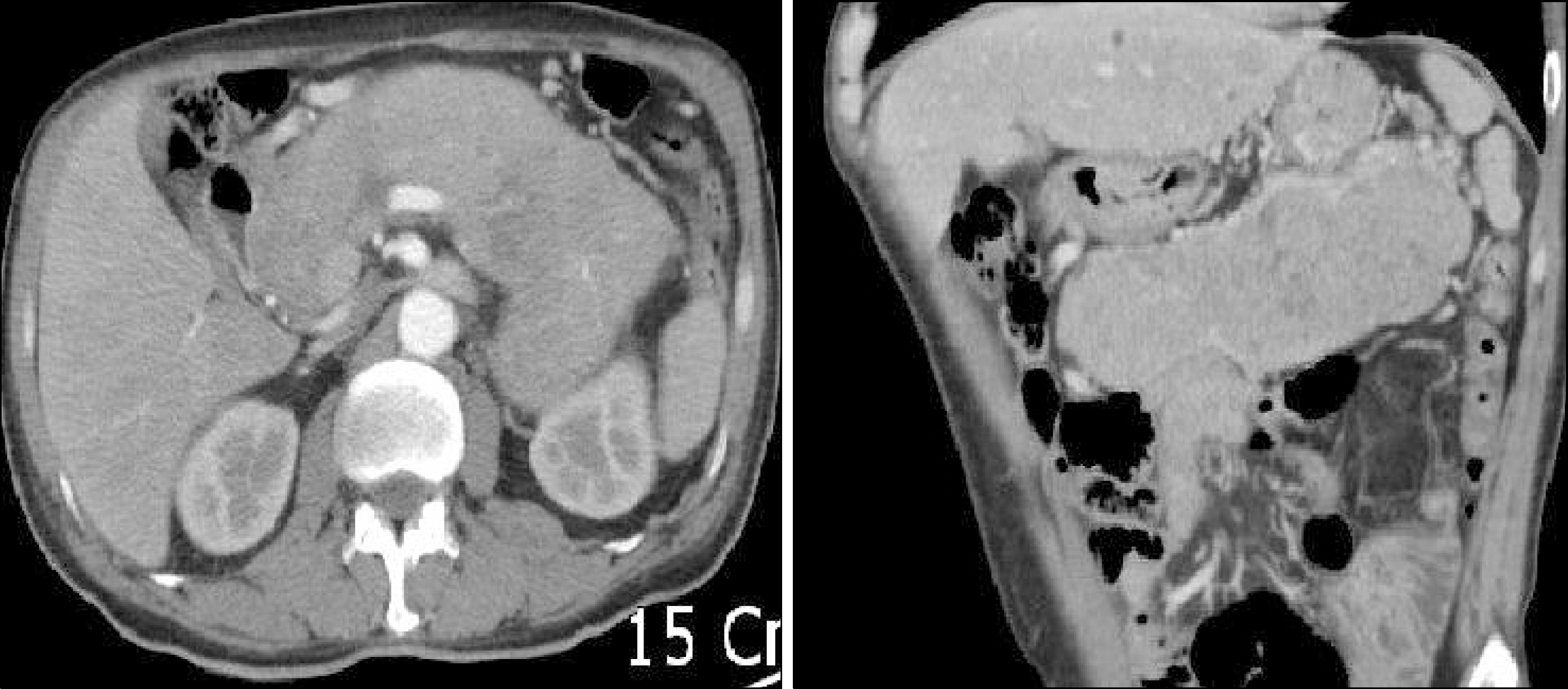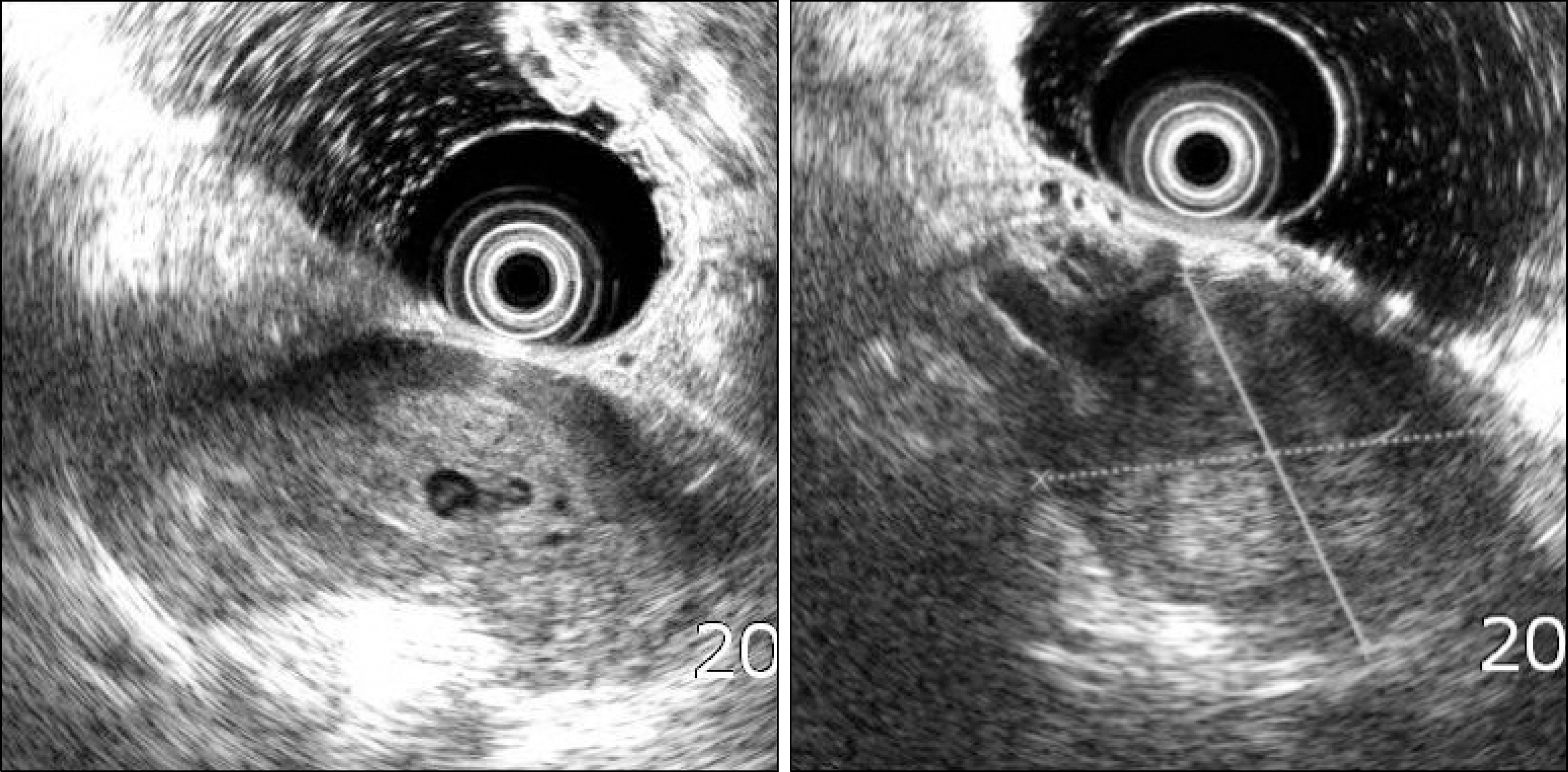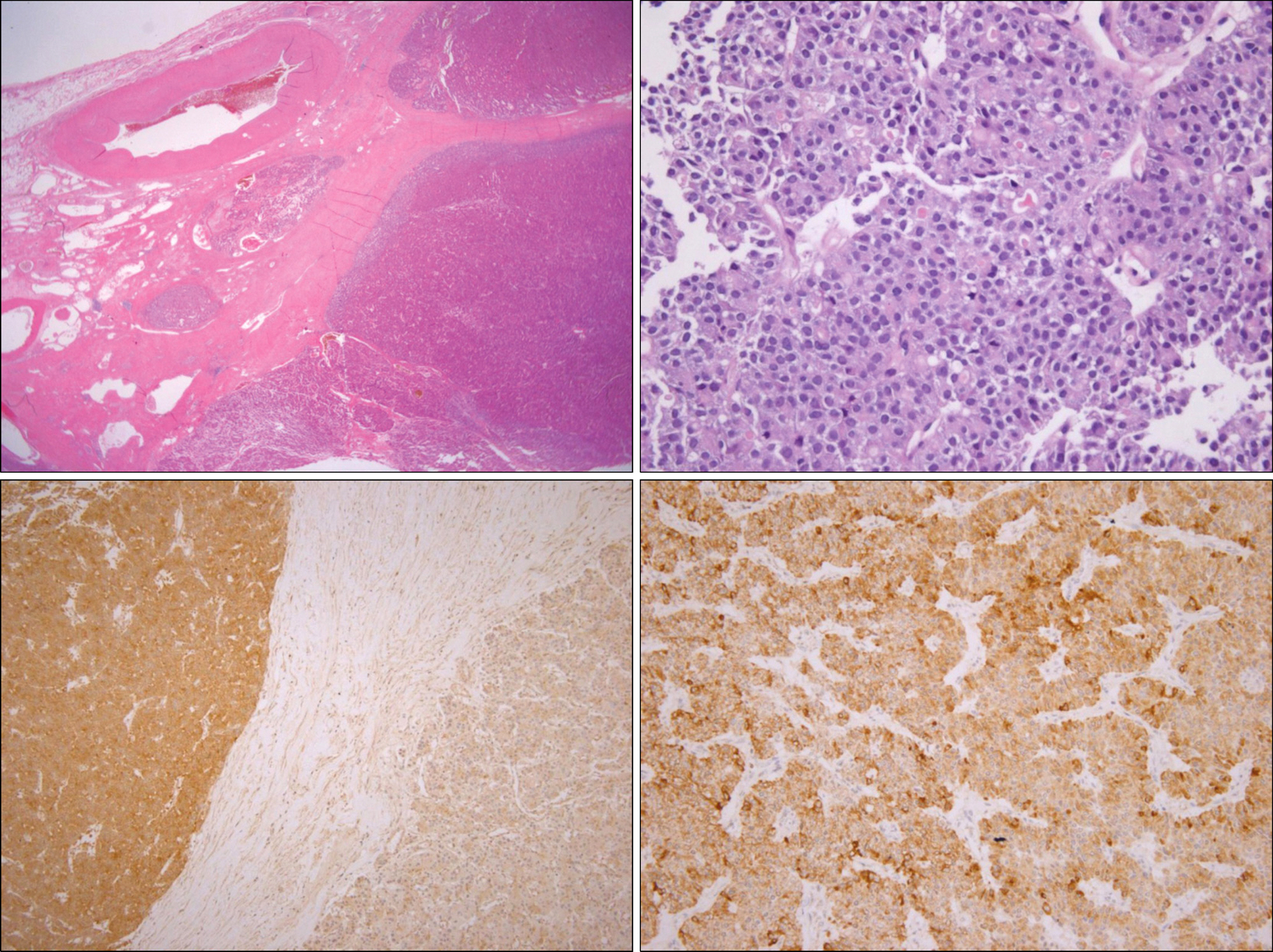Korean J Gastroenterol.
2010 Feb;55(2):139-143. 10.4166/kjg.2010.55.2.139.
A Case of Acinar Cell Carcinoma of Pancreas, Manifested by Subcutaneous Nodule as Initial Clinical Symptom
- Affiliations
-
- 1Department of Internal Medicine, Kangbuk Samsung Hospital, Sungkyunkwan University School of Medicine, Seoul, Korea. jwa.lee@samsung.com
- KMID: 1718298
- DOI: http://doi.org/10.4166/kjg.2010.55.2.139
Abstract
- Pancreas acinar cell carcinoma (ACC) accounts for only 1-2% of pancreatic exocrine malignant tumor. The symptoms of patients with ACC are usually non-specific, for example the anorexia and weight loss. Patients may develop Schmid's triad including subcutaneous fat necrosis, polyarthritis, and eosinophilia. We reported a case of ACC which was manifested by subcutaneous nodule as initial clinical symptom. To our knowledge, this is the first reported case of ACC presenting as subcutaneous fat necrosis in Korea.
Keyword
MeSH Terms
Figure
Reference
-
1. Klimstra DS, Heffess CS, Oerterl JE, Rosai J. Acinar cell carcinoma of the pancreas. A clinicopathologic study of 28 cases. Am J Surg Pathol. 1992; 16:815–837.2. Lee JL, Kim TW, Chang HM, et al. Locally advanced acinar cell carcinoma of the pancreas successfully treated by capeci-tabine and concurrent radiotherapy: report of two cases. Pancreas. 2003; 27:e18–22.
Article3. Holen KD, Klimstra DS, Hummer A, et al. Clinical characteristics and outcomes from an institutional series of acinar cell carcinoma of the pancreas and related tumors. J Clin Oncol. 2002; 20:4673–4678.
Article4. Kim KY, Lee HJ, Ji JH, et al. A case of acinar cell carcinoma of the pancreas. Korean J Med. 2009; 76:506–509.5. Kim HD, Lee BK, Choi KH, Lee SD, Seo JK, Park YH. Clinical study of pancreatic cancer. J Korean Surg Soc. 1992; 42:172–189.6. Kim MC, Kim HH, Jung GJ, Kim SS. Clinical study of acinar cell carcinomas of the pancreas. J Korean Surg Soc. 2001; 60:97–102.7. Lee SH, Kim H, Kang SW. Acinar cell carcinoma of the pancreas: a case report. J Korean Radiol Soc. 1998; 39:1181–1183.
Article8. Hoorens A, Lemoine NR, McLellan E, et al. Pancreatic acinar cell carcinoma. An analysis of cell lineage markers, p53 expression, and Ki-ras mutation. Am J Pathol. 1993; 143:685–698.9. Ashley SW, Lauwers GY. Case records of the Massachusetts General Hospital. Weekly clinicopathological exercises. Case 37-2002. A 69-year old man with painful cutaneous nodules, elevated lipase levels, and abnormal results on abdominal scanning. N Engl J Med. 2002; 347:1783–1791.10. Itoh T, Kishi K, Tojo M, et al. Acinar cell carcinoma of the pancreas with elevated serum alphafetoprotein levels: a case report and a review of 28 cases reported in Japan. Gastroenterol Jpn. 1992; 27:785–791.11. Horie Y, Gomyoda M, Kishimoto Y, et al. Plasma carcino-embryonic antigen and acinar cell carcinoma of the pancreas. Cancer. 1984; 53:1137–1142.
Article12. Geibel J, Longo W. Less common neoplasms of the pancreas. World J Gastroenterol. 2006; 28:3180–3185.13. Antoine M, Khitrik-Palchuk M, Saif MW. Longterm survival in a patient with acinar cell carcinoma of pancreas. A case report and review of literature. J Pancreas. 2007; 8:783–789.
- Full Text Links
- Actions
-
Cited
- CITED
-
- Close
- Share
- Similar articles
-
- A Case of Acinar Cell Carcinoma of the Pancreas
- Acinar Cell Carcinoma of the Pancreas: A case report
- Mixed acinar-endocrine carcinoma of the pancreas: a case report
- Pancreatic Panniculitis Associated with Acinar Cell Carcinoma of the Pancreas: A Case Report
- Acinar Cell Carcinoma of the Pancreas: A Case Report






